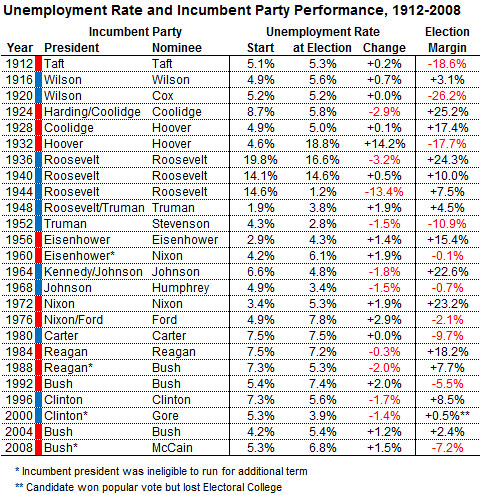REALLY do you realize that there is no proof of th
Post# of 65629
Quote:
REALLY do you realize that there is no proof of the opposite--The TRUTH is difficult--isn't it!!
Let go with the facts--how many LEFT the workforce??? HMMM
How many new peeps joined????
You believe the allegations. The burden of proof is on you.
That's the way our jurisprudence system works.
If someone made allegations about you, would you be satisfied if they didn't provide proof?
Now let’s try common sense. IF the Labor Dept was ‘so inclined’ to f*ck with the numbers why would they wait just days before the election?
Why wouldn’t they have rereleased ACTUAL ‘dramatic’…..your word…..numbers? The unemployment numbers clicked UP 1/10 of a point
‘Dramatic’ would have been a rate clicked down by what, .2, .4, .6? If ‘they’ COULD do it, why didn’t they do it?
http://www.nytimes.com/2012/11/03/business/ec...tober.html
Quote:
“The unemployment rate ticked up slightly to 7.9 percent in October, from 7.8 percent in September, but for a good reason: more workers joined the labor force and so officially counted as unemployed.
None of this makes for a game-changer in the presidential race, analysts said . But it appeared to provide some relief for President Obama, whose campaign could have been sideswiped by bad news from the volatile monthly jobs report. With the latest numbers, the economy finally shows a net gain of jobs during his presidency. His record had previously been weighed down by huge layoffs in his first year in office after the financial crisis.
http://fivethirtyeight.blogs.nytimes.com/2011...tion/?_r=0
On the Maddeningly Inexact Relationship Between Unemployment and Re-Election
By
Nate Silver
June 2, 2011 9:59 pm June 2, 2011 9:59 pm
Make no mistake: the higher the unemployment rate in November 2012, the less likely President Obama is to win a second term.
But we should be careful about asserting that there is any particular threshold at which Mr. Obama would go from favorite to underdog, or any magic number at which his re-election would either become impossible or a fait accompli.
Historically, the relationship between the unemployment rate and a president’s performance on Election Day is complicated and tenuous .
An article in today’s Times notes, for example, that “no American president since Franklin Delano Roosevelt has won a second term in office when the unemployment rate on Election Day topped 7.2 percent.” That was the unemployment rate in November 1984, when Ronald Reagan resoundingly won a second term.
This type of data may be of limited use for predictive purposes, however. Reagan won re-election by 18 points, suggesting that he had quite a bit of slack. An unemployment rate of 7.5 percent or even higher would presumably have been good enough to win him another term.
It’s also not obvious that Roosevelt should be excluded from the calculus, particularly given that the economic crisis the country is working its way out of now is the most severe since his administration.
He won re-election in 1936 with an unemployment rate of 16.6 percent, and again in 1940 with a rate of 14.6 percent.
For Roosevelt, at least, the unemployment rate was headed in the right direction: down from 19.8 percent in 1933, the year he took office. This was also true for Reagan, although only barely so: he inherited an unemployment rate of 7.5 percent from Jimmy Carter, seeing it drop to 7.2 percent in time for his re-election.
The unemployment rate when Mr. Obama took office was 7.8 percent — and he may not follow in his predecessors’ footsteps by leaving it in a better place than he found it. As of last month, private forecasters like Wells Fargo and The Wall Street Journal‘s forecasting panel were anticipating an unemployment rate close to 7.8 percent by late 2012.
But those forecasts preceded a bevy of poor economic reports, which may lead some economists to lower their estimates.
Looking at unemployment in this way — as the rate of change over a president’s term — is probably the more worthwhile approach. But it, too, is not always reliable. Unemployment increased by 1.9 percentage points over the course of Richard M. Nixon’s first term, but he won re-election easily.
It also increased in George W. Bush’s and Dwight D. Eisenhower’s first terms, and their re-election bids were also successful. The unemployment rate fell to 3.9 percent from 5.3 percent, meanwhile, in Bill Clinton’s second term — but his vice president, Al Gore, could not beat Mr. Bush in the Electoral College.
There are also cases in which the data behaved more intuitively: Jimmy Carter and the elder George Bush all faced high unemployment rates when they lost their re-election bids, as did Gerald R. Ford in 1976, and that was surely a factor in their defeats.
But historically, the correlation between the unemployment rate and a president’s electoral performance has been essentially zero.
In the chart below, I’ve provided unemployment data for the last century’s worth of presidential elections, comparing the
unemployment rate on Inauguration Day to the one that the president (or the incumbent party’s candidate) faced on Election Day. Data for 1948 onward is on a monthly basis, while only annual estimates are available before then.

“
 (1)
(1) (0)
(0)